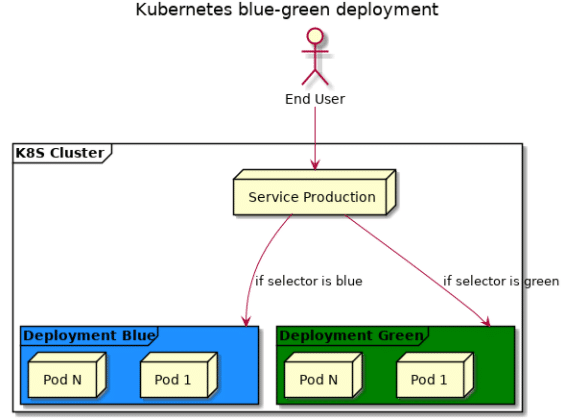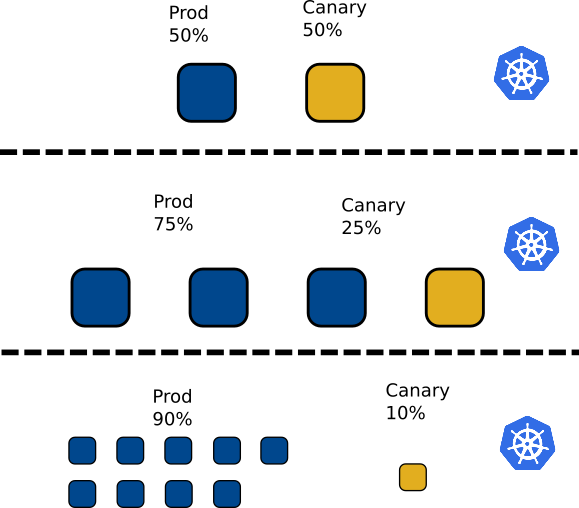Key Takeaways
Zero downtime deployment is essential for maintaining a seamless user experience on eCommerce platforms.
Kubernetes supports multiple deployment strategies, including rolling updates, blue/green deployments, and canary releases.
Configuration management tools like Helm and Kustomize simplify the deployment process and make rollbacks easier.
Monitoring and logging tools such as Prometheus and Fluentd provide real-time insights into application performance and health.
Readiness and liveness probes in Kubernetes ensure that only healthy pods receive traffic, preventing downtime.
Zero Downtime Deployment: Kubernetes Techniques for eCommerce Platforms
Why Zero Downtime Matters in eCommerce
Imagine you’re running an eCommerce platform, and during a peak shopping season, your website goes down for just a few minutes. That brief outage could result in lost sales, frustrated customers, and a damaged reputation. Zero downtime deployment is crucial to prevent such scenarios. It ensures that your platform remains available and responsive, even while updates are being applied.
Zero downtime deployment means updating your application without taking it offline. This is especially important for eCommerce platforms where even a few minutes of downtime can lead to significant revenue loss. Besides that, a smooth and uninterrupted user experience helps maintain customer trust and satisfaction.
Kubernetes Deployment Strategies
Kubernetes offers several deployment strategies to achieve zero downtime. Understanding these strategies will help you choose the best one for your eCommerce platform.
Rolling Updates
Rolling updates are the cornerstone of Kubernetes’ approach to zero downtime deployments. This strategy updates pods incrementally, ensuring that new versions are deployed without disrupting the existing services.
During a rolling update, Kubernetes gradually replaces the old version of your application with the new one. It does this by incrementally updating pods, ensuring that some instances of the old version are always running until the new version is fully deployed.
Gradual Transition: Allows monitoring of the new version’s behavior before completing the full roll-out.
Easy Rollback: If issues arise, it’s easy to pause or rollback to the previous version.

“Performing a Rolling Update | Kubernetes” from kubernetes.io and used with no modifications.
Blue/Green Deployments
Blue/green deployments involve running two identical production environments, one for the current version (blue) and one for the new version (green). Traffic is initially routed to the blue environment. Once the green environment is ready and tested, traffic is switched to it, ensuring zero downtime.

“Simple Kubernetes blue-green …” from blog.nillsf.com and used with no modifications.
Canary Releases
Canary releases involve deploying the new version of your application to a small subset of users first. This allows you to monitor the new version’s performance and gather feedback before rolling it out to the entire user base. If any issues are detected, you can quickly roll back without affecting the majority of users.

“Fully automated canary deployments in …” from medium.com and used with no modifications.
Implementing Zero Downtime with Kubernetes
Implementing zero downtime deployments with Kubernetes involves several steps and best practices. Let’s explore how you can set up Kubernetes for your eCommerce platform and leverage its powerful features.
Setup Kubernetes for Your eCommerce Platform
Setting up Kubernetes for your eCommerce platform is the first step towards achieving zero downtime deployments. Start by creating a Kubernetes cluster and deploying your application using Kubernetes resources such as pods, services, and deployments.
Here’s a step-by-step guide:
Create a Kubernetes cluster using a cloud provider like Google Kubernetes Engine (GKE), Amazon Elastic Kubernetes Service (EKS), or Azure Kubernetes Service (AKS).
Define your application as a Kubernetes deployment. This includes specifying the container image, replicas, and other configuration details.
Expose your application using a Kubernetes service. This allows external traffic to reach your application.
Configure ingress controllers to manage external access to your application. Ingress controllers provide advanced routing capabilities and SSL termination.
Once your Kubernetes cluster is set up, you need to focus on configuration management and monitoring to ensure zero downtime during deployments.
Configuration Management with Helm and Kustomize
Configuration management is a critical aspect of zero downtime deployments. Tools like Helm and Kustomize simplify the process of managing Kubernetes configurations, making it easier to deploy and rollback applications.
Helm: Helm is a package manager for Kubernetes that allows you to define, install, and upgrade complex Kubernetes applications. It uses charts to describe the structure of your application, including its dependencies and configuration options.
Kustomize: Kustomize is a configuration management tool that allows you to customize raw, template-free YAML files for multiple purposes. It enables you to manage different configurations for different environments without duplicating YAML files.
Using these tools, you can create reusable and version-controlled configurations for your eCommerce platform, ensuring consistent and reliable deployments.
Using Probes: Liveness and Readiness
Kubernetes provides liveness and readiness probes to monitor the health of your application. These probes ensure that only healthy pods receive traffic, preventing downtime during deployments.
Liveness Probes: These probes check if your application is running. If a liveness probe fails, Kubernetes will restart the pod to recover from the failure.
Readiness Probes: These probes check if your application is ready to handle traffic. If a readiness probe fails, Kubernetes will stop sending traffic to the pod until it passes the readiness check.
By configuring liveness and readiness probes, you can ensure that your application remains available and responsive, even during updates.
Advanced Techniques for Zero Downtime
Besides basic deployment strategies, there are advanced techniques that can further enhance the reliability of your eCommerce platform.
Feature Flags and Decoupled Deployments
Feature flags allow you to enable or disable features in your application without deploying new code. This enables you to test new features in production with a subset of users before rolling them out to everyone.
Decoupled deployments involve separating the deployment of your application’s backend and frontend components. This allows you to update one component without affecting the other, reducing the risk of downtime.
A/B Testing in Kubernetes
A/B testing involves comparing two versions of your application to determine which one performs better. In Kubernetes, you can implement A/B testing by routing a portion of your traffic to a new version of your application and comparing the results.
For example, you can deploy a new version of your product page and route 10% of your traffic to it. By monitoring user behavior and performance metrics, you can determine if the new version provides a better user experience before rolling it out to all users.
Case Studies: Success Stories in eCommerce
Let’s look at some real-world examples of eCommerce platforms that have successfully implemented zero downtime deployments using Kubernetes.
Case Study: Major Retailer Deployments
A major online retailer faced challenges with deploying updates during peak shopping seasons. By implementing Kubernetes rolling updates, they were able to deploy new versions of their product catalog service without any downtime.
Gradual rollout of new versions allowed them to monitor performance and user feedback.
Easy rollback mechanisms ensured that any issues could be quickly addressed without affecting the user experience.
Increased customer satisfaction and reduced revenue loss during peak times.
Case Study: Seasonal Traffic Handling
An eCommerce platform that experiences significant traffic spikes during holiday seasons used blue/green deployments to handle the increased load. By running two identical environments, they could switch traffic between them seamlessly, ensuring zero downtime.
Best Practices for Seamless Deployments
To achieve zero downtime deployments, it’s essential to follow best practices for monitoring, logging, and automation. For instance, you can learn more about the impact of Kubernetes on software release velocity to enhance your deployment process.
Monitoring and Logging with Prometheus and Fluentd
Effective monitoring and logging are crucial for maintaining the health and performance of your eCommerce platform. Tools like Prometheus and Fluentd provide real-time insights into your application’s behavior.
Prometheus: Prometheus is an open-source monitoring and alerting toolkit designed for reliability and scalability. It collects metrics from your applications and infrastructure, allowing you to monitor performance and detect issues early.
Fluentd: Fluentd is an open-source data collector that helps you unify and process your log data. It can aggregate logs from multiple sources and send them to various destinations, making it easier to analyze and troubleshoot issues.
Automating Rollbacks with Kubernetes
Automation is key to achieving zero downtime deployments. Kubernetes provides mechanisms for automating rollbacks in case of failures, ensuring that your application remains available even when issues arise.
By configuring your deployment strategy to include automatic rollbacks, you can minimize downtime and quickly recover from errors. This involves setting up health checks, monitoring deployment progress, and defining rollback criteria.
Ensuring Security During Deployments
Security is a critical aspect of zero downtime deployments. During updates, vulnerabilities can be introduced, making your platform susceptible to attacks. Therefore, it’s essential to follow best practices to secure your deployments.
First, ensure that your Kubernetes cluster is secure. Use Role-Based Access Control (RBAC) to manage permissions and restrict access to sensitive resources. Additionally, enable network policies to control traffic between pods and prevent unauthorized access.
Second, use image scanning tools to detect vulnerabilities in your container images. Tools like Clair and Trivy can help you identify and fix security issues before deploying your application.
Finally, implement secure coding practices and regularly update your dependencies. By following these best practices, you can minimize the risk of security breaches during deployments.
Conclusion
Achieving zero downtime deployments is essential for maintaining a reliable and seamless user experience on your eCommerce platform. By leveraging Kubernetes deployment strategies, configuration management tools, and monitoring solutions, you can ensure that your application remains available and responsive during updates.
Final Thoughts on Achieving Zero Downtime
Zero downtime deployment is not just a technical goal; it’s a business necessity. In the competitive world of eCommerce, even a few minutes of downtime can lead to significant revenue loss and customer dissatisfaction. By implementing the techniques and best practices discussed in this article, you can enhance the reliability of your platform and provide a better experience for your users.
Frequently Asked Questions (FAQ)
What is Zero Downtime Deployment?
Zero downtime deployment is a strategy that allows you to update your application without taking it offline. This ensures that your users can continue to access your platform without any interruptions, even during updates.
How do Rolling Updates Work in Kubernetes?
Rolling updates in Kubernetes involve incrementally updating pods with the new version of your application. This ensures that some instances of the old version are always running until the new version is fully deployed. If issues arise, you can easily pause or rollback the update.
What are Blue/Green Deployments?
Blue/green deployments involve running two identical production environments, one for the current version (blue) and one for the new version (green). Traffic is initially routed to the blue environment. Once the green environment is ready and tested, traffic is switched to it, ensuring zero downtime.
How can I Monitor My Kubernetes Deployments?
You can monitor your Kubernetes deployments using tools like Prometheus and Fluentd. Prometheus collects metrics from your applications and infrastructure, while Fluentd aggregates and processes log data. These tools provide real-time insights into your application’s performance and health.
What Role do Probes Play in Zero Downtime Deployments?
Liveness and readiness probes in Kubernetes ensure that only healthy pods receive traffic. Liveness probes check if your application is running, and if they fail, Kubernetes will restart the pod. Readiness probes check if your application is ready to handle traffic, and if they fail, Kubernetes will stop sending traffic to the pod until it passes the readiness check.



